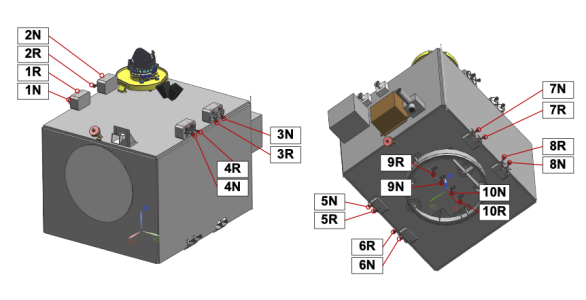Flight Control System Assessment Toolbox for Optimal Mission Cost and Performance

The evolution of space technology has allowed ESA to consider new possibilities for challenging and groundbreaking mission that impose new and complex requirements and constraints both on the ground and space mission segments.
In the ground segment the Flight Dynamics System (FDS) is responsible for controlling the spacecraft and designing the operations required for a successful mission. These can range from programming and executing reaction wheel off-loadings to perform orbit determination, and compute manoeuvre for orbit maintenance or even trajectory re-optimisation, passing by guiding the spacecraft’s attitude. In this respect, one of the most challenging and successful was ROSETTA – this highly challenging mission managed to deliver a lander to a small body in a highly uncertain environment which required fast and agile ground interaction with the spacecraft systems. The ground operations achieved on this mission by the FDS are considered as a high standard to be followed by the succeeding missions. The FDS has, however, its limitations. It relies on communication links and data processing that may require a non- negligible time which deteriorates the navigation solution when this is used to command the spacecraft. This can be particularly challenging for mission at far ranges from Earth.
The spacecraft’s Guidance, Navigation and Control (GNC) system – responsible for providing the translation and rotational status of the spacecraft, correct its trajectory along its nominal path, and control the Six Degrees Of Freedom (6DOF) motion – can assume new levels of autonomy taking some of the burden off the FDS system. This enables both reducing the mission cost and improving the spacecraft’s navigation performance which reduces mission risk. This autonomy has been considered in the past for the Marco Polo mission and is currently being assessed for the Phobos-SR (formerly known as PHOOTPRINT) and the AIM missions. The GNC system, however, cannot run completely independently from ground and requires some level of interaction between the FDS and the GNC.
The study of the hybridization of the use of the FDS with the spacecraft’s GNC as well the optimal interface point between the two systems has been performed on the most recent ESA mission studies such as the AIM and the Phobos-SR missions. The goal is to find the optimal strategy for achieving the mission goals within the available resources which often relates to the spacecraft navigation performance, mission cost, spacecraft mass, or technology readiness.
These studies, however, tend to be performed early on the mission based on very preliminary assumptions, with no solid navigation analysis, leading to sub-optimal strategy choices on which the systems design rely on.
The present activity (Flight Control System Assessment Toolbox for Optimal MIssion Cost and performance, FCS-ATOMIC) aims at filling this void, by developing a framework that simulates both the FDS and GNC systems, which together make the Flight Control System (FCS), and the possible interactions/hybridization between them.
